In a never-ending game of boom and bust, the industry is facing elevated input costs, retailer rationalisations and an escalating climate crisis
Like a game of snakes and ladders, UK dairy is prone to frequent and extreme ups and downs – and it often feels like little meaningful progress is being made. As The Collective CEO Sarah Smart says, it’s been a “crazy few years”. And the past 12 months have been crazier than most.
The fun and games began in earnest in December 2022. Fuelled by a combination of tight supply and soaring production costs, the UK average farmgate milk price rocketed to an all-time high of 51.60p per litre. Retail prices shot up accordingly.
Almost a year later, farmgate prices are now plunging as quickly as they rose, and retail prices are also on the slide.
At the same time, uncertainty is mounting over supply as more dairy farmers consider throwing in the towel. Input costs are expected to rise, supermarkets are looking to cut costs, and the climate emergency is demanding ever-greater investment.
Which leaves the industry where? In this never-ending game of boom and bust, is it back to square one for dairy’s farmers, suppliers and retailers alike?
Last winter’s record farmgate prices couldn’t have come too soon for farmers. The impact of covid, the war in Ukraine and extreme weather had together resulted in a 35% jump in their annual input costs [AF Aginflation Index 52 w/e 30 September 2023].
So, when December’s farmgate high hit – a 75.5% increase on the average in April 2021, when farmgate prices started their rise – it was understandably welcomed by dairy farmers.
“If retailers value security of supply and take out some volatility for suppliers, they’ll have to increase retail prices”
On the supplier side, though, it was a less welcome hit to bottom lines. “We had already baked inflation into our budgets, but this was a far more significant, hard and fast increase than we had initially forecasted,” says Smart.
The Collective was by no means the only one to feel the pressure. The likes of Yeo Valley, Arla and Saputo Dairy UK all reported slumps in profitability linked to higher farmgate prices. Many processors admitted they could not sustain any further hikes.
Luckily for them, milk production levels soon began to increase, negating the need for any more such price rises. But this caused the pendulum to swing the other way. The average farmgate price began falling steeply in early 2023, led by decreases at the major processors.
![snakesandladders[61] (1)](https://dmrqkbkq8el9i.cloudfront.net/Pictures/480xany/4/9/2/304492_snakesandladders611_743469.jpg)
Medina Freshways is an example of this boom and bust picture. It led the market with farmgate hikes last autumn. But by the end of 2022, it had cut its price from 50ppl to 47ppl – citing the risk that “some of our markets [are] being undermined by competitors, who are not paying as much for milk as we have done”. Its price continued to fall over the course of 2023.
That downward trajectory was mirrored across the industry, reaching an average of 36.48ppl by June, according to Defra. And it fell further into the summer, anecdotal evidence suggests.
It means farmgate prices slumped 29.3% in the five months between February and June. Dairy farmers had little opportunity to make meaningful money amid this turmoil, says Wyke Farms MD Rich Clothier.
Farmgate prices “went too high and are now coming back down too far”, he says. “There is a lack of stability in the market and this rollercoaster isn’t giving [farmers] the stability they need.”
Are we finally seeing deflation in dairy?
Consumer research published by Bord Bia in July revealed 61% of UK consumers felt their financial situation had deteriorated over the previous six months – and 48% felt the coming 12 months could be even more problematic.
Fifty-seven per cent of shoppers had continued to buy cheese at an unchanging volume in recent months, and 54% have stuck to the same amount of butter. But 26% said they were buying less butter and cheese – driven by price increases and budgetary limitations.
Given that level of shopper sentiment, it’s little surprise the mults have been looking to cut retail prices since they hit record levels at the start of 2023.
- Following a raft of reductions since the spring, prices for key dairy staples are now on a downward trajectory, according to The Grocer’s Key Value Items tracker, which analyses data from Assosia.
- The average block of own-label cheese (350g-400g), for instance, fell 5.9% in price between mid-May and the end of August.
- The average price of an own-label block of salted butter (250g) fell 5.1% over the same period, while an own-label fat-free natural yoghurt SKU (500g) was on average 5.3% cheaper.
- Most significantly, however, a two-pint bottle of own-label milk – the price of which peaked in January at £1.31 – is 3.9% cheaper on average than it was in mid-May. The SKU now comes at an average of £1.21.
The damage caused by that volatility was revealed in August by the NFU. Its annual survey found 9% of UK dairy farmers expected they would end milk production within the next two years, in the face of tumbling returns and soaring costs. That’s an alarming 28.6% rise on last year’s survey.
Of the key factors that could curtail their milk production, 84% cited feed prices; 83% were troubled by energy prices; and 80% pointed to cashflow and profitability. And 91% said the main issue deterring them from increasing milk production was the scale of investment required.
To help mitigate these pressures, retailers have faced calls to up their farmgate prices. Those calls intensified last winter and, in March 2022, Tesco, Sainsbury’s and Co-op announced they would give significant rises to farms in their aligned pools.
Further hikes followed that summer. In June 2022, Tesco claimed its 10.6% rise from 41.59ppl to 46ppl would “help to address the current unprecedented levels of on-farm inflation”.
It also fuelled sharp levels of retail price inflation. By July 2022, the average price of two pints of milk had hit £1.15 – the same level as a four-pinter at the beginning of that year. The price of a two-pinter peaked at £1.31 in January 2023.
ONS data at the start of 2023 highlighted the sheer scale of inflation: a pint of milk had rocketed 50% in a year to 69p, the average price of cheddar was up 31.4%, and block butter was 29.3% pricier.
In retail too, though, the market has been turbulent. Just a few months later, retail dairy prices started to dip. Retailers cited the fall in dairy commodity prices as a key driver in the spring.
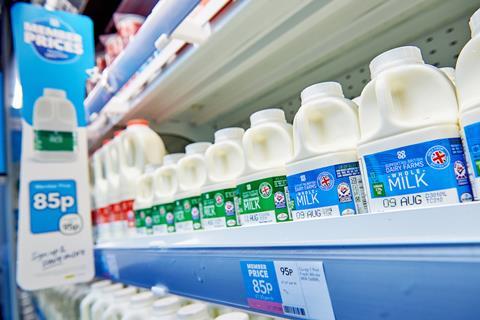
By July this year – following a spate of price cutting initiatives by the major supermarkets – ONS data showed the average price per pint of milk had fallen to 66p.
The softening of prices was supported by promotional activity from big suppliers such as Arla and Müller. Assosia data shows the total number of promotions across the traditional big four increased 11.1% between 28 February and 28 August.
Arguably, this was necessary to stop cash-strapped shoppers turning away, which had already prompted volume declines in milk (p51) and other dairy sectors. Jonathan Dixon, Arla’s senior VP of sales, says its “significant investment in our brands” via promotions was a key tool in rebuilding demand.
Now, as autumn approaches, the industry is at a crossroads. While the need to appeal to hard-hit consumers remains, commentators wonder whether retail prices will climb once again.
This is because all indicators point to imminent increases in farmgate prices. One key indicator is new government regulations on contractual relations between farmers, processors and retailers – designed to promote greater fairness and transparency across the sector. They were announced by Defra in July, and a statutory instrument is due before parliament by the end of the year.
“Farmers must be paid a fair price for their produce and these regulations will provide price certainty and stability for farmers by establishing written milk purchase agreements with clear and unambiguous terms,” said farming minister Mark Spencer, when announcing the measures in the summer.
Furthermore, while global dairy supplies are expected to be flat for the rest of 2023, analysts expect a decline into 2024. This, coupled with the ongoing elevation of input costs, could result in farmgate prices climbing once again.
The Defra shake-up facing milk price contracts
Farmgate prices have been on a rollercoaster ride. A long climb began in April 2021 – reaching a peak of 51.60ppl in December – before embarking on a rapid downward trajectory.
This kind of wild ride could soon be closed for business. Dairy farmers will in future be able to challenge the price they are paid for their milk by processors and retailers, as part of industry reforms announced in July by the government.
The far-reaching – and long-awaited – plans are designed to “promote fairness and transparency across the dairy sector”, Defra said at the time.
Farms will be given clearer pricing terms in contracts that set out the factors informing the proposed milk price.
For the first time, farmers will be able to challenge prices “if they feel this process isn’t being followed”, Defra said. This change marks “a major advance in transparency” that addresses “historical discrepancies”, it said.
Contracts will include a straightforward way to raise concerns about terms, thereby promoting accountability and timely issue resolution. There will also be clear rules on notice periods and contractual exclusivity – “protecting the rights of both buyers and sellers”, according to Defra.
Buyers will be barred from making changes to contracts without the agreement of farmers. This should encourage dialogue between parties where changes need to be made – improving trust within the supply chain, Defra added.
Finally, an enforcement mechanism will be in place to guarantee “a fully fair and transparent dairy industry on a solid foundation to thrive”.
A statutory instrument enabling the regulations is expected to be laid before parliament later this year.
Future uncertainty
This may be a necessity, looking at the returns to farmers. Average farmgate prices now stand at about 36ppl. That is below the average monthly breakeven price for dairy farmers, which has fallen from a high of 44ppl last autumn to sit around 39ppl-40ppl, according to data from Kite Consulting.
Given that inflation is still affecting many key inputs, Kite is forecasting the breakeven cost for UK farmers will remain just under 40ppl until at least next March. There’s even the possibility the current elevated level of costs could become “the new normal” unless productivity, labour costs and the like return “to pre-Ukraine levels”, warns Kite director John Allen.
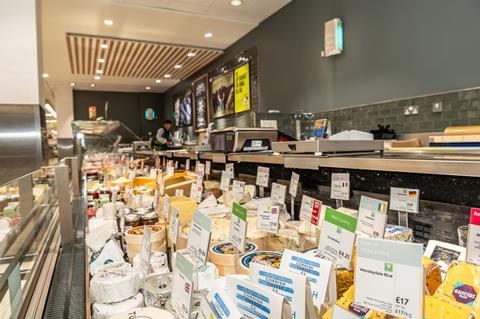
Ash Amirahmadi, who stepped down as Arla UK MD during the summer, also believes input costs will remain high. “We’re not going to get any less conflict in the world, production isn’t booming and costs will also be influenced by the climate – which is going to massively shoot up the league table of priorities for dairy businesses,” he warns.
In response, we will likely see another rise in farmgate prices – which could lead another bout of extreme highs and lows, Allen suggests.
“I suspect we are currently running so far below breakeven that we’ll see a significant drop off in supply as we go into the winter, and next year that farmgate price will rise again – meaning we could be back at record highs by the start of 2024,” he says.
This will lead to another tricky situation for suppliers – and one that is perhaps even trickier than the squeeze they suffered last December. This time around, supermarket customers are keen to continue cutting retail prices.
“We’re not going to get any less conflict in the world, production isn’t booming and costs will also be influenced by the climate”
Take Tesco. Earlier this year, the retailer insisted suppliers need not request higher prices because they were already benefiting from a 50% drop in wholesale electricity prices, a 22% drop in PET packaging prices and an 84% fall in freight costs.
Sainsbury’s made similar points in May ahead of a major range reset. One supplier told The Grocer the retailer had “been shaking the tree and asking for money with the consequential prospect of benefits or losses in the forthcoming range reviews”.
Many dairy suppliers will now be looking over their shoulders nervously, suggests The Collective’s Smart, who has already seen significant rationalisation in the yoghurt aisle. The writing is on the wall for brands that cannot “offer something different to consumers”, she warns.
Even if retailers back down and shelf prices were to rise again, this could pose other difficulties, Wyke Farms’ Clothier believes.
“The problem is, obviously, when you do put those cost price increase requests in, if they are accepted, that drives inflation,” he says. “It also drives customers away, and they move to other categories potentially or just buy less of your product.”
Kite’s Allen believes this may just be an inevitable situation. “If retailers value security of supply and take a long-term view by taking out some of the volatility for their suppliers, they’ll have to increase retail prices again,” he says.
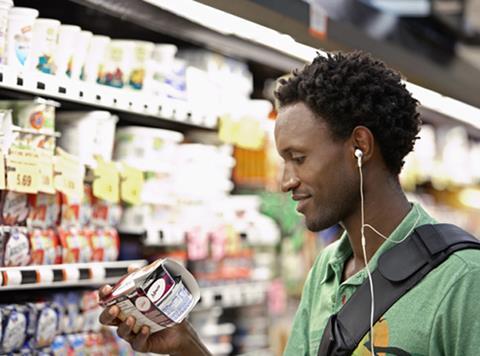
Whatever happens in the immediate future, the longer-term question is how to put an end to this boom and bust cycle.
Clothier questions whether UK milk production – most of which is for the domestic market – is too closely aligned to global commodity markets when it comes to setting prices.
“In my opinion, that continental pricing model just doesn’t work for the UK. It pushes the price higher, and now we’re seeing the milk price come back further than it should have gone – and it’s just damaging the whole industry,” he argues.
Defra, meanwhile, believes its contractual changes should create a more stable pricing structure. Farmers will be able to challenge prices if they fall beyond what is reasonable – in a move that could put an end to such extreme volatility and give farmers more ability to invest in their future.
That’s a crucial factor considering dairy suppliers face many other challenges beyond costs. Chief among them is climate change, Amirahmadi says. “People love heatwave conditions but farmers don’t, and many have been operating in proper drought conditions,” he says. Plus, farmers are having to invest in meeting new slurry and emission regulations.
Allen argues sustainability will become as important to the sector as inflation over the next two years. A Kite report in May said eco credentials were already a key criteria for retailers when deciding whether to list – or delist – suppliers.
The problem is that confidence – as per the NFU poll – is at rock bottom. And, as Clothier says, “you need to be confident in your business to invest”.
Why milk suppliers have axed their colour-coded caps
Red, green and blue bottle caps have long helped to signpost different types of milks. But those caps can’t be recycled into food grade packaging.
By switching to clear alternatives, processors can retain the material to make new caps and bottles. According to packaging supplier Biffa, this is “essential for a sustainable future”.
As such, axing coloured caps has become a trend.
First floated as a trial between Waitrose and its supplier Müller Milk & Ingredients in March 2022, the pair made a permanent switch three months later. Freshways announced its own move that summer.
Müller announced it had completed the transition across its customers – which include Sainsbury’s, Co-op, Aldi, Lidl and One Stop – in August.
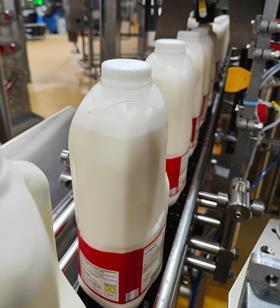
In the same month, Arla said it would follow suit, in partnership with its own-label customers such as Asda, Morrisons and Tesco.
What seems like a simple change, however, “has a lot of complexity behind it, in terms of how consumers use the cap in stores, plus how colleagues use it when identifying what to pick in warehouses and in factories,” says Müller MD Rob Hutchison.
“We did a lot of analysis in the early days to understand the implication of the change and worked with consumers to understand their views and whether they would accept it,” Hutchison adds.
“But once we explained our rationale, the response was overwhelmingly positive. We’ve even seen other drinks categories follow our lead.”








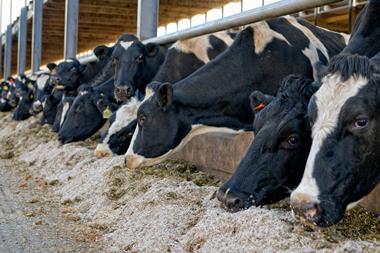
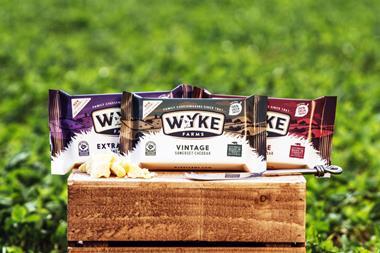
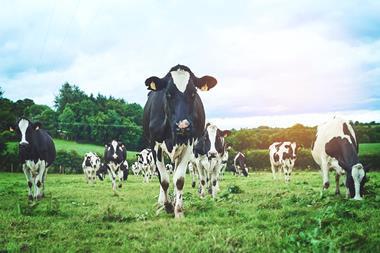
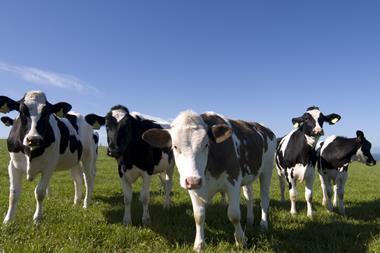

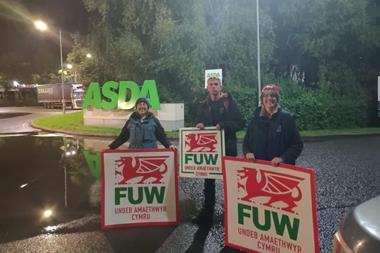






No comments yet